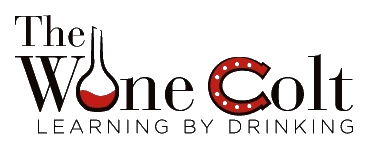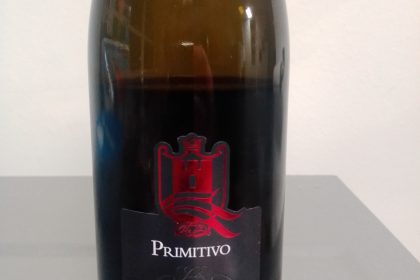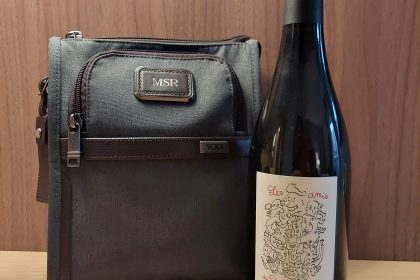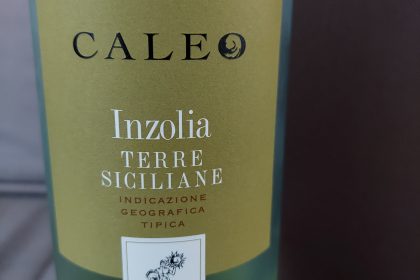I truly am one lucky son of a…wine connoisseur. Not only is it a great bonding experience with my old man and some of his friends, which some have become my friends, other acquaintances, but I get invited to try truly magnificent wines that are simply recherché. This was one such case. If there is one brand of wine that I’ve embedded into my subconscious as a sort of family heirloom is Joseph Phelps. From their Napa ‘satos’ (which is what we call their Cabernet and is spanish for mutt), to their particular varietals, to the great Insignia but never excluding what has suddenly become a very searched for wine, Backus. The vineyards are located in Oakville AVA, a little south from Insignia vineyards, but surrounded by big names left and right such as Screaming Eagle, Dalla Valle and Peter Michaels, to name a few. Not that it needs them for comparison but just as a geographical note to understand Oakville’s terroir can be a force to be reckon with. I found this article from Decanter from 1998 talking about Oakville that I thought was interesting and will definitely use when I start writing about vineyards and winemakers.
 The curious note of this vertical is that it was led by the local Wine Organization ‘Bacchus’ which is 28 years old and one of it’s founding members was my old man and this was the first time that Bacchus did a Backus vertical so they went all out. We would try the years 1981, 1985, 1987, 1988, 1996, 1997, 1999, 2000, 2001, 2002, 2003 and 2004.
The curious note of this vertical is that it was led by the local Wine Organization ‘Bacchus’ which is 28 years old and one of it’s founding members was my old man and this was the first time that Bacchus did a Backus vertical so they went all out. We would try the years 1981, 1985, 1987, 1988, 1996, 1997, 1999, 2000, 2001, 2002, 2003 and 2004.
The event took place in Bottles, a well known restaurant in Guaynabo, PR best known mainly for three things: Their variety of wines, the amount of food they serve and their mascot dog who has become a legend of it’s own (and his successors). Also, they use the place for events such as this. We were received with some Perrier-Jouët Champagne that had amazing and crisp acidity and enduring citric aromas. I usually try to just have one glass before a big vertical like this but, they hit me with formidable bubbles and well…the palate wants what it wants.
Any event devoted to Joseph Phelps wines in Puerto Rico always includes in the conversation the person who brought the brand to the attention to our wine community, Mr. Tom Shelton. A good friend of the family and all around nice guy that took the brand to new heights. We also talked about his wife, Laurie Shelton who after the death of her husband started CAMi vineyards with the help of winemaker John Giannini and it was all based as a tribute to Tom. Side note, they have an interesting blend that has received good reviews.
The first wine served was the 1981. It was served alone and as soon as it was opened. Expectations in general before serving weren’t high but that wine was alive like 1980’s California Cabernet Sauvignon’s know how. 13.5% alcohol and that beautiful white capsule and vintage label that I miss from JP. It aged beautifully and had an intrinsic nose that didn’t last long but it had a long finish though. Dry fruit like figs engulfed my taste buds. It was a graceful wine.
After that we were served the 1985, the 1987 and 1988 together. There were some interesting conversations being had about these wines including the expectations for 1985 that were tanked by the fact that it had just arrived by plane that day and it could be seen in the opacity of the wine and the unsettling drinking experience. At first I did get a mild hint of eucalyptus, something a few of Phelp wines in the 70’s and 80’s had but unusual because in Oakville there isn’t that much eucalyptus that I know of from my readings (never been there so if anybody from the area knows different, let me know to correct my notes). The nose did fade away and even though it was ok on palate, it wasn’t what I imagined from that year. The 1987 on the other hand, was one of my favorites of the night. It had a beautiful translucent almost but not quite brick color. I laughed a bit when I saw on Cellar Tracker that the drinking window for this wine was between 1998 and 2012. This wine has Energizer batteries because it can keep going and going. I got some cherry jubilee aroma from it and such a balanced act on palate with good fruit for its age. Finally there was 1988 on this flight. Some found it to be the better one of the flight but to me it was a bit foggy on my first few attempts to get some aromas. It had some spice to it but barely noticeable and a tad more acidity (that I could notice). I’m not complaining though, it was a good wine and on it’s own I would have probably given it more praise but that’s the point of a vertical. Finding the nuances, the issues, the corkiness (and hopefully not the corked). After we voted, if I’m remembering correctly, 1987 won the flight, but if we open it to include 1981, I would stick with the elderly.
fact that it had just arrived by plane that day and it could be seen in the opacity of the wine and the unsettling drinking experience. At first I did get a mild hint of eucalyptus, something a few of Phelp wines in the 70’s and 80’s had but unusual because in Oakville there isn’t that much eucalyptus that I know of from my readings (never been there so if anybody from the area knows different, let me know to correct my notes). The nose did fade away and even though it was ok on palate, it wasn’t what I imagined from that year. The 1987 on the other hand, was one of my favorites of the night. It had a beautiful translucent almost but not quite brick color. I laughed a bit when I saw on Cellar Tracker that the drinking window for this wine was between 1998 and 2012. This wine has Energizer batteries because it can keep going and going. I got some cherry jubilee aroma from it and such a balanced act on palate with good fruit for its age. Finally there was 1988 on this flight. Some found it to be the better one of the flight but to me it was a bit foggy on my first few attempts to get some aromas. It had some spice to it but barely noticeable and a tad more acidity (that I could notice). I’m not complaining though, it was a good wine and on it’s own I would have probably given it more praise but that’s the point of a vertical. Finding the nuances, the issues, the corkiness (and hopefully not the corked). After we voted, if I’m remembering correctly, 1987 won the flight, but if we open it to include 1981, I would stick with the elderly.
After a light intermission while they decanted the next flight, there were some conversation and some innocent fun-making at the expense of Robert Parker and his point system and how a wine in the 80’s that had 90-91 points is comparable to the 96-97 of today. Because there wasn’t a commercialization of the 90 points like we have today. (I’m promising myself I will soon start writing about my comparisons of wines of 89 vs 90 points).
 And so started the next flight and we were served 1996, 1997 and 1999. The 1996 was for many, probably the WOTN (wine of the night). At first contact there’s a subliminal toast scent to it with obviously a bit more fruit presence than the wines from the previous decade. The black fruit was present as was the leather thing but in really small form. I mean, I smell an aged Pago de Carraovejas and it smells like an old horse saddle stored in an abandoned farm covered in dry straw leather but this was more like a hanging in my closet leather belt. The 1997 was a fascinating wine. At first it was a good wine. Some traditional aromas and moderate finish, etc. But I left some in the glass and continued to come back to it. Let’s consider that these wines were not decanted that long, so what was happening is that it continued to manifest itself as the night progressed. It’s tannins were alive and kicking for it’s age and the fruit was palpable. Then came 1999 and it caught my attention. So much milk chocolate on first contact. I was not expecting that. There was anise, there was herbs there was a party in my mouth and it was partying like it was nineteen ninety nine. Long finish and well rounded. This was another one of my favorites of the night. This year also saw the 3rd change of labels for the wine. Although it could have been in 1998, but I don’t have that information handy.
And so started the next flight and we were served 1996, 1997 and 1999. The 1996 was for many, probably the WOTN (wine of the night). At first contact there’s a subliminal toast scent to it with obviously a bit more fruit presence than the wines from the previous decade. The black fruit was present as was the leather thing but in really small form. I mean, I smell an aged Pago de Carraovejas and it smells like an old horse saddle stored in an abandoned farm covered in dry straw leather but this was more like a hanging in my closet leather belt. The 1997 was a fascinating wine. At first it was a good wine. Some traditional aromas and moderate finish, etc. But I left some in the glass and continued to come back to it. Let’s consider that these wines were not decanted that long, so what was happening is that it continued to manifest itself as the night progressed. It’s tannins were alive and kicking for it’s age and the fruit was palpable. Then came 1999 and it caught my attention. So much milk chocolate on first contact. I was not expecting that. There was anise, there was herbs there was a party in my mouth and it was partying like it was nineteen ninety nine. Long finish and well rounded. This was another one of my favorites of the night. This year also saw the 3rd change of labels for the wine. Although it could have been in 1998, but I don’t have that information handy.
Once again, part of the chatter included talking about the composition of the wines. This wine is considered to be a Cabernet Sauvignon even though it has a small percent of other two grapes but we were not sure what that percentage was. It topped at around 7 percent combining Petit Verdot and Malbec which is quite a small quantity but make for an interesting combination. We also talked about the steep hillside and the hand picked grapes because there’s no room for machinery in this vineyard.
The next flight was divided in two. First we were served 2000 and 2004 by the sommelier of the group. Then we were served 2001, 2002 and 2003  together. At first the decision seemed curious but after trying the wines you can tell the decision was well thought out. The 2000 was an off year by California standards, but this wine was brilliant nonetheless. This wine is 18 years old and against all odds, it has aged gracefully. I’ve read reviews saying it has ‘elaborated crafted tannins’ and while I don’t know exactly what that’s supposed to mean (blame it on my inexperience), I do know that it had structure, it was full body and a had a long finish. Actually, maybe that’s exactly what it means. So much for a self described aficionado writer. Anyhow, the 2004 was surprising in a good way but might as well been a ringer in the vertical because this was something else. First hit, vanilla bean biscotti. You can really tell how the style has departed from the original wines and even though I never did try Joseph Phelp Backus wines from the 1980’s during the 1980’s, I sincerely doubt they were so extravagant. This wine could star in a J.K. Rowling wine parody titled “Bombastic Beasts & Where To Wine Them“. By the way, I’d watch that movie. So, is it a surprise after me saying this that Robert Parker gave this wine 97 points? Draw your own conclusions. But I would love to see how this wine evolves over the years. Other than the vanilla, this wine had dark fruits, full body chewiness, even a toasty scent of dehydrated black currant wood boxes (See? I can also come up with descriptions that sound like a thing). Between the two it was a difficult choice because even though they weren’t completely similar, the individual nuances made it a tough choice. I went with the 2004 because that vanilla was just lovely.
together. At first the decision seemed curious but after trying the wines you can tell the decision was well thought out. The 2000 was an off year by California standards, but this wine was brilliant nonetheless. This wine is 18 years old and against all odds, it has aged gracefully. I’ve read reviews saying it has ‘elaborated crafted tannins’ and while I don’t know exactly what that’s supposed to mean (blame it on my inexperience), I do know that it had structure, it was full body and a had a long finish. Actually, maybe that’s exactly what it means. So much for a self described aficionado writer. Anyhow, the 2004 was surprising in a good way but might as well been a ringer in the vertical because this was something else. First hit, vanilla bean biscotti. You can really tell how the style has departed from the original wines and even though I never did try Joseph Phelp Backus wines from the 1980’s during the 1980’s, I sincerely doubt they were so extravagant. This wine could star in a J.K. Rowling wine parody titled “Bombastic Beasts & Where To Wine Them“. By the way, I’d watch that movie. So, is it a surprise after me saying this that Robert Parker gave this wine 97 points? Draw your own conclusions. But I would love to see how this wine evolves over the years. Other than the vanilla, this wine had dark fruits, full body chewiness, even a toasty scent of dehydrated black currant wood boxes (See? I can also come up with descriptions that sound like a thing). Between the two it was a difficult choice because even though they weren’t completely similar, the individual nuances made it a tough choice. I went with the 2004 because that vanilla was just lovely.
The last three wines I’ll be honest, I didn’t drink a lot of them and I think that even though they made the exercise more complete, they belong in a cellar for at least 5-10 more years. Maybe I had some wine exhaustion (or was simply exhausted from work, this happened a Thursday night after all) so my notes aren’t as detailed as the other wines. But I’ll share some thoughts on them. They were quite tannic, overpowering full body, dark and purple like a young wine can be (even though these wine are between 15-17 years old) lots of black fruit and resinous to some degree with a long and persistent finish. I’m sure there were differences among them and some of the pros at the event could tell them apart, but for the life of me, I did not press record in my brain at this stage of the vertical.
I’m going to close saying that even though Insignia is the staple wine for Joseph Phelps, in the last decade or so, Backus has become like a silent ninja, taking private auctions by surprise, costing sometimes even more than Insignia wines and sought after by connoisseurs across the globe. This exercise was phenomenal and I saw it as a continuation of another exercise I participated in four years ago where we did Joseph Phelps Insignia from 1974 to 2009 (I will write about it sometime soon. Not so much about all the wines because it was a long time ago and I didn’t take good notes, but about the experience, the exercise, the special event and curiosities discussed). The wines that stood up for me where the 1981 with it’s magnificent longevity, the 1987 with its fruit long finish, the 1999 with it’s milk chocolate perfume and the 2004 with it’s vanilla empowering aroma. That being said, no bad wines this night. By themselves I’d drink any of these wines without a doubt as I continue being an everlasting ambassador for Joseph Phelps and their fantastic spectrum of wines.
Cheers!

Some of the notes from the presentation given by senior by wine:
1981: Early harvest, very hot august reduced fruit production. Matured early and wines have great longevity. 91 RP.
1985: Season of early buds and relatively amicable weather. Harvest of mature and perfect balance. 90 RP.
1987: This year there was a drought with very few fruit produced. Very hot summer. Best wines were picked early. 88 RP.
1988: Small harvest, difficult and very variable with bad weather on each stage. Simple wines. 88 RP.
1996: Hot and difficult year. Those who left the grapes longer during the vintage produced better wines. 93 RP.
1997: Large harvest of concentrated, opulent, mature wines a product of perfect weather conditions. 94 RP.
1999: Great depth, concentration and structure. Moderate climate conditions. Wines have great longevity. 95 RP.
2000: Mixed harvest with some green in it. Some stellar wines. Vintages was slighted. 91 RP.
2001: Excellent weather conditions. Profound and complex. 97 RP.
2002: Dense and rich. Dark , masculine, and firm tannins type of wines. There were variations in the vineyards. 96 RP.
2003: Wines resulted with inconsistencies in maturity, austere and quite tannic. 98 RP.
2004: Small harvest of exceptional quality. Mature, elegant, concentrated and harmonious. 97 RP.




